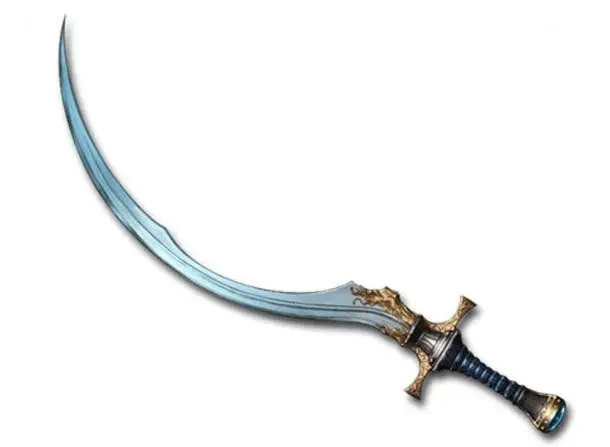Swords have long been a symbol of power, skill, and heroism. Throughout history, these bladed weapons have played pivotal roles in shaping the outcomes of battles, and they have evolved in design and use across different cultures and periods.
In this post, we’ll explore some of the most famous swords used in ancient battles.
1. The Gladius: The Roman Short Sword
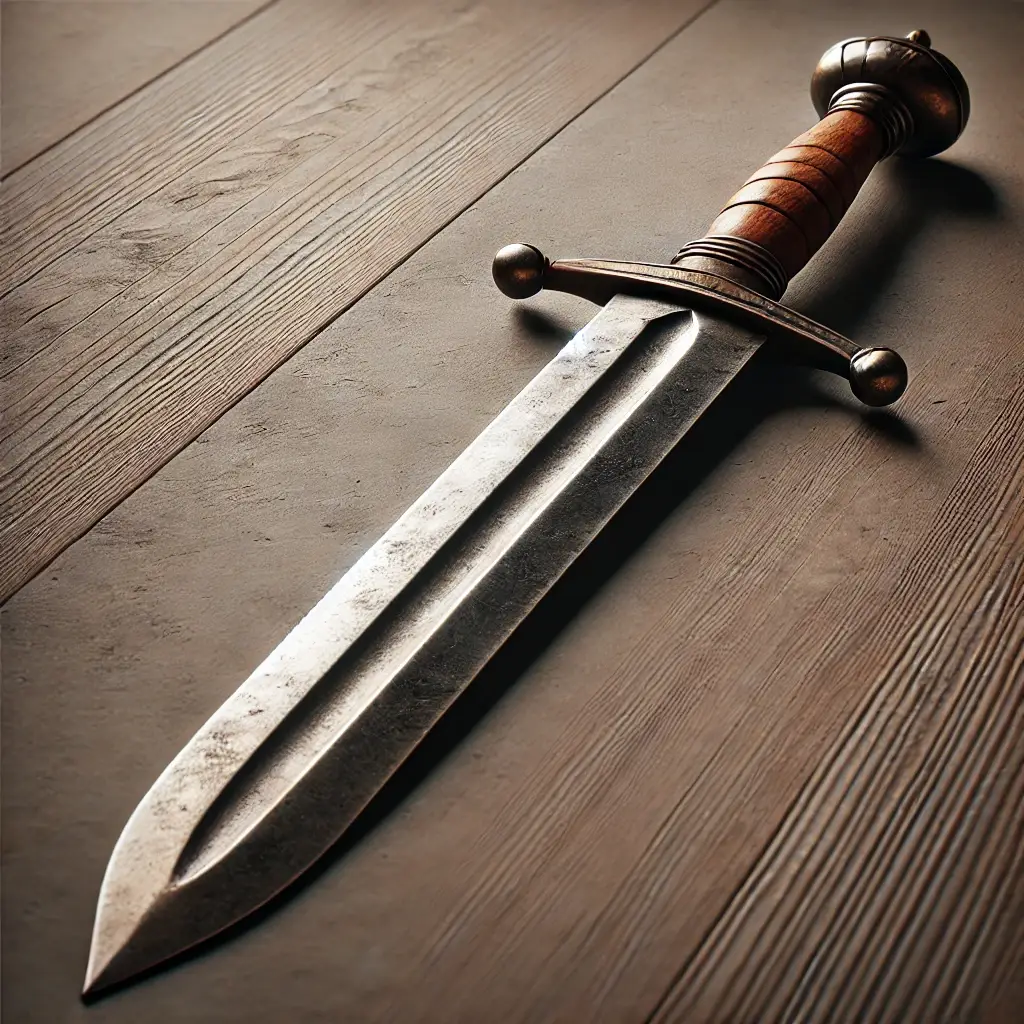
The gladius is perhaps one of the most iconic swords in history, widely recognized as the weapon that helped build the Roman Empire. Used primarily by Roman legionaries, the gladius was a short, double-edged sword, typically about 18 to 24 inches in length. Its design was influenced by the swords used by Iberian tribes in Spain, which the Romans encountered during their conquests.
Key Characteristics of the Roman Gladius
Length: 18 to 24 inches.
Blade: Double-edged with a pointed tip.
Use: Primarily for thrusting, but also effective for slashing.
Military Significance: The gladius was ideal for close-quarter combat, which was a hallmark of Roman military tactics. The Roman legions would form tight formations, such as the famous testudo (tortoise) formation, and use the gladius to stab and thrust at enemies from behind their large shields.
The gladius was not just a weapon but a symbol of Roman discipline and military prowess. Its effectiveness in battle, coupled with the disciplined training of the Roman soldiers, made the Roman army one of the most formidable forces in ancient history.
2. The Spatha: The Roman Cavalry Sword
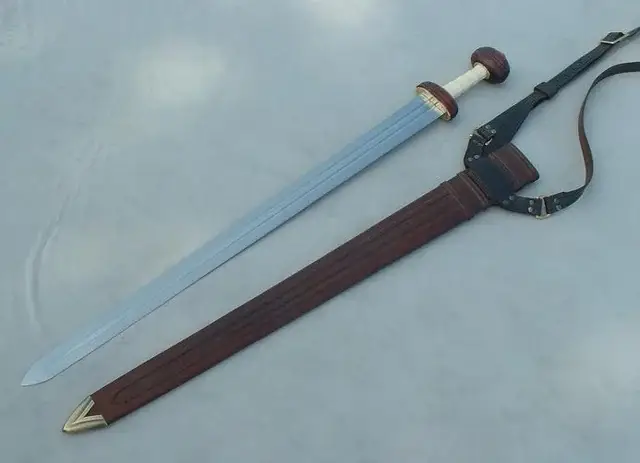
As the Roman Empire expanded and evolved, so did its weaponry. The spatha was a longer sword, measuring between 28 and 39 inches, originally used by Roman cavalry. However, by the later stages of the Empire, the spatha began to replace the gladius as the standard sword for infantry as well.
Key Characteristics of the Spatha
Length: 28 to 39 inches.
Blade: Long and straight, often double-edged.
Use: Effective for both cutting and thrusting.
Military Significance: The spatha’s longer reach made it more suitable for mounted combat and open battlefield engagements. Its adoption by infantry reflects changes in the Roman military tactics, including the decline of the tight formations that had made the gladius so effective.
The spatha would go on to influence the design of medieval swords in Europe, including the Viking sword and the arming sword of the medieval knight.
3. The Xiphos: The Greek Double-Edged Sword
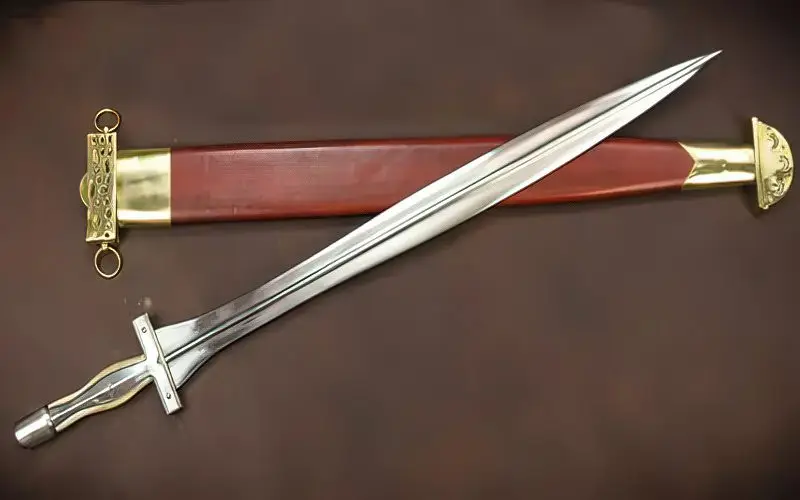
The xiphos was the primary sword of the ancient Greek hoplites, the heavily armoured foot soldiers of the Greek city-states. The xiphos was typically a short sword, with a blade length of around 20 to 25 inches, and it was designed for use in close-quarters combat.
Key Characteristics of the Xiphos Sword
Length: 20 to 25 inches.
Blade: Double-edged, often leaf-shaped, with a pointed tip.
Use: Primarily for stabbing, but also capable of slashing.
Military Significance: The xiphos was used as a secondary weapon, with the spear being the primary weapon of the hoplites. When the spear was broken or became impractical, the xiphos would be drawn to continue fighting. Its design allowed for effective thrusting in the gaps of enemy armor.
The xiphos was a symbol of the Greek warrior ethos, emphasizing skill and bravery in the face of the enemy. It was also associated with legendary heroes such as Achilles and Alexander the Great.
4. The Kopis: The Curved Sword of the Greeks
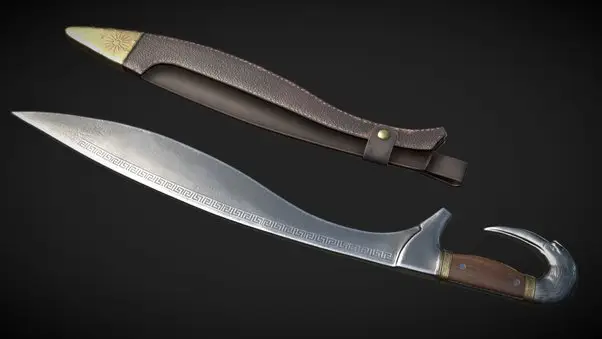
In contrast to the xiphos, the kopis was a single-edged sword with a distinct forward-curving blade. This design made it particularly effective for cutting and slashing. The kopis was used by both Greek and Macedonian armies, especially by cavalry.
Key Characteristics of the Kopis Sword
Length: 18 to 22 inches.
Blade: Single-edged, forward-curving, with a heavy, weighted end.
Use: Primarily for slashing and chopping.
Military Significance: The kopis was a versatile weapon, effective both on foot and on horseback. Its design allowed for powerful chopping blows, which could be devastating in battle. The sword’s shape is thought to have been influenced by earlier Egyptian and Near Eastern designs.
The kopis’ ability to deliver strong, cleaving strikes made it a favoured weapon for mounted warriors, who needed to maximize the impact of their blows while moving quickly across the battlefield.
5. The Khopesh: The Sickle-Sword of Egypt
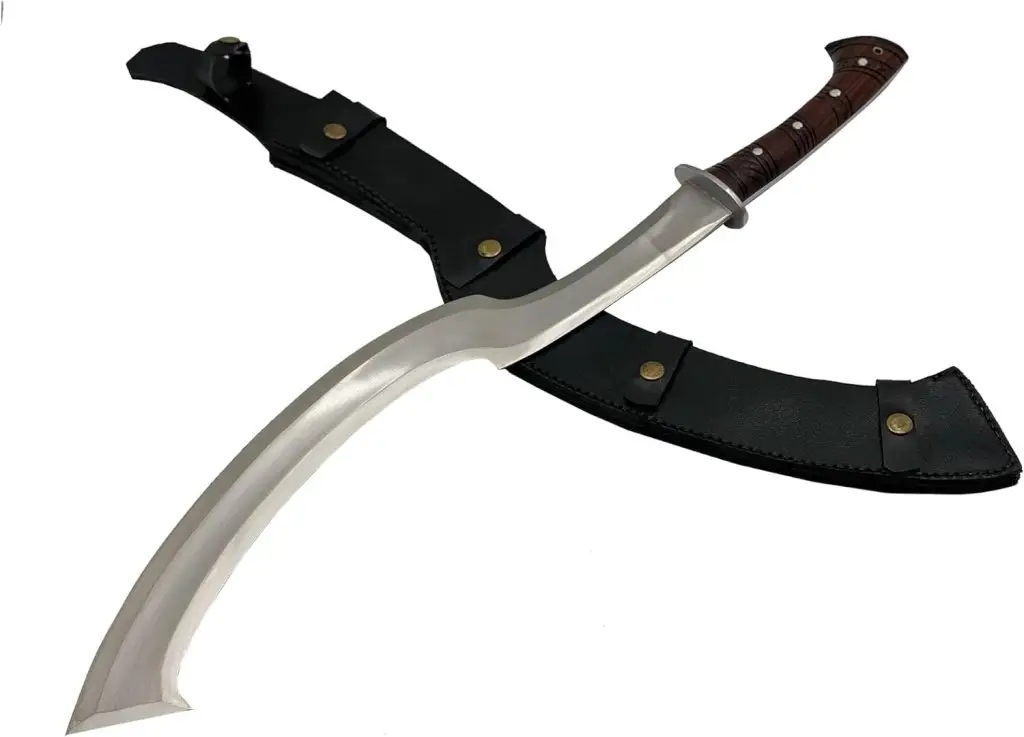
The khopesh is one of the most distinctive ancient swords, originating from Egypt around 2500 BCE. It features a curved, sickle-like blade that was used for both slashing and hooking opponents. The khopesh is often depicted in the hands of Egyptian pharaohs and warriors in ancient reliefs and statues.
Key Characteristics of the Khopesh
Length: Typically around 20 inches.
Blade: Curved, with a single edge and a hook-like shape.
Use: Effective for slashing and for disarming or pulling an opponent’s shield away.
Military Significance: The khopesh was not just a weapon but also a symbol of power and authority. It was often used in ceremonial contexts, and its unique design made it a versatile tool on the battlefield, capable of both offensive and defensive manoeuvres.
The khopesh’s design reflects the ingenuity of ancient Egyptian weaponry, combining the cutting power of a sword with the utility of a tool for grappling and controlling the enemy.
The khopesh’s design reflects the ingenuity of ancient Egyptian weaponry, combining the cutting power of a sword with the utility of a tool for grappling and controlling the enemy.
6. The Katana: The Samurai Sword of Japan
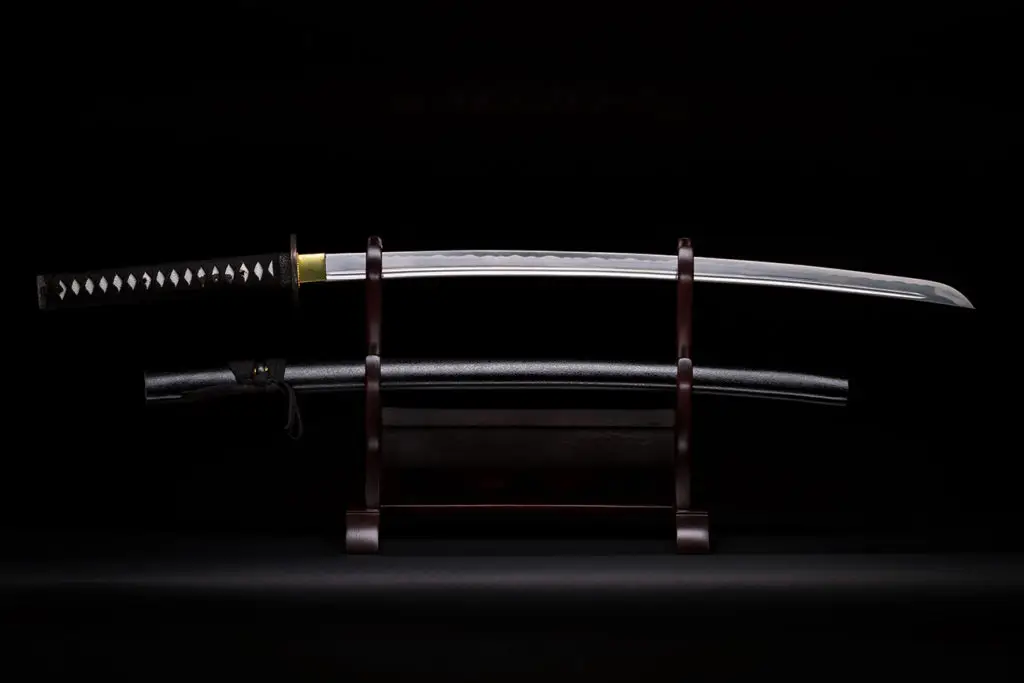
Although the katana is more associated with the medieval period, it has its roots in ancient Japan and deserves mention for its iconic status and influence. The katana is a long, curved sword with a single, razor-sharp edge. It was the weapon of choice for the samurai, Japan’s warrior class, who valued the katana for its cutting ability and the skill required to wield it effectively.
Key Characteristics of the Katana Sword
Length: 24 to 30 inches.
Blade: Curved, single-edged, with a sharp point.
Use: Primarily for cutting, with a focus on precision and technique.
Military Significance: The katana was more than just a weapon; it was a symbol of the samurai’s honour and mastery of martial arts. Forging a katana was an art involving complex techniques to produce a blade that was both incredibly sharp and resilient.
The katana’s design and cultural significance have made it one of the most famous swords in history, with a legacy that extends far beyond the battlefield.
7. The Jian: The Double-Edged Sword of China
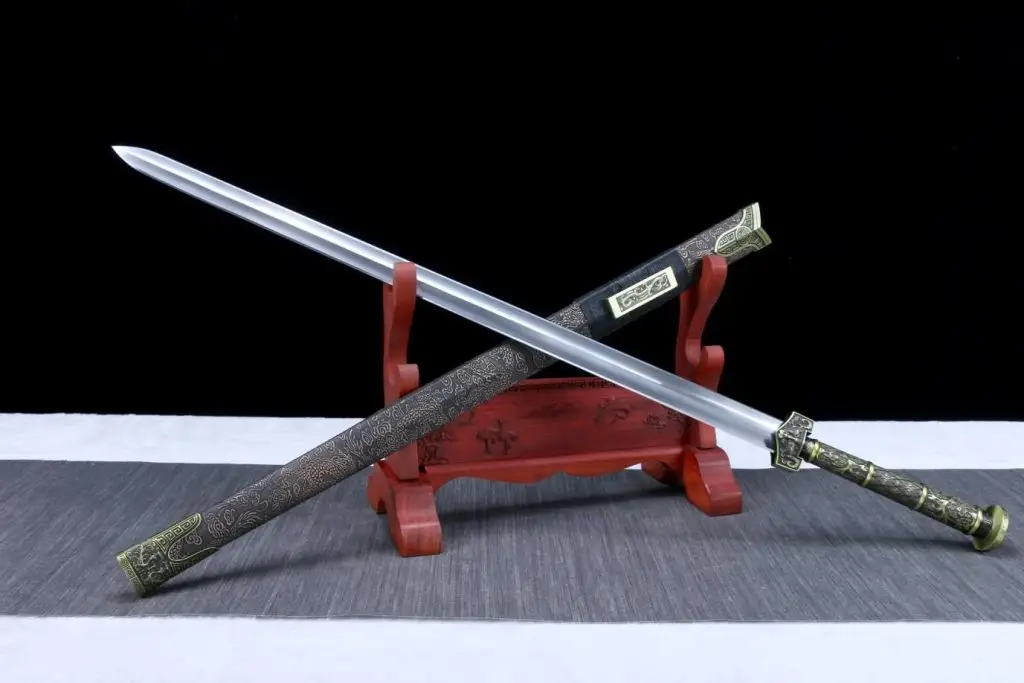
The Jian is one of the oldest and most revered swords in Chinese history, often referred to as the “Gentleman of Weapons.” With a history dating back over 2,500 years, the Jian was used by various dynasties in China and is deeply embedded in Chinese martial arts and culture.
Key Characteristics of the Jian Sword
Length: Typically between 18 to 28 inches for single-handed versions, with some longer versions used with two hands.
Blade: Double-edged, straight, with a sharp point.
Use: The Jian was a versatile weapon used for both cutting and thrusting. Its design allowed for quick, precise strikes and fluid movements.
Military Significance: The Jian was often associated with scholars and nobles, symbolizing virtue, honour, and refinement. Unlike heavier swords used primarily for brute force, the Jian was considered a weapon of finesse, requiring skill and discipline to wield effectively.
The Jian’s importance extends beyond the battlefield; it is a symbol of Chinese philosophy and martial arts, often associated with Taoist and Confucian ideals. The sword’s use in Wushu (Chinese martial arts) emphasizes balance, control, and agility, reflecting the philosophical concepts of Yin and Yang.
The Jian’s importance extends beyond the battlefield; it is a symbol of Chinese philosophy and martial arts, often associated with Taoist and Confucian ideals. The sword’s use in Wushu (Chinese martial arts) emphasizes balance, control, and agility, reflecting the philosophical concepts of Yin and Yang.
